Dunmore House (Raphoe North)
Houses within 15km of this house
Displaying 51 houses.
Houses within 15km of Dunmore House (Raphoe North)
Displaying 51 houses.
| House name | Description | |
|---|---|---|
| Blanket Nook | Messers Brassey and McCormack held this property in fee at the time of Griffiths Valuation in the 1850s when it was valued at £13. It is described as a steward’s house. The National Inventory of Architectural Heritage dates its building to the mid -1840s, contemporary with the massive reclamation of land from the sea which took place in the area at that time. Blanket Nook is still extant. |

|
| Ballymoney (Burt) | At the time of Griffiths Valuation in the 1850s, Samuel Porter was leasing this property from Lord Templemore’s estate when it was valued at £11. It is labelled Ballymoney on all editions of the Ordnance Survey maps but is no longer extant. | |
| Bohullion | Several properties at this location were being leased from Lord Templemore’s estate by members of the Leathem family at the time of Griffith’s Valuation, in the 1850s. Samuel Leathem senor occupied a house which was valued at £14 10s. Samuel Leathem junior occupied a house and substantial mill and distillery complex. The National Inventory of Architectural Heritage indicates that the house at the site is now called Beech Park and dates from c.1845. Elements of the industrial complex are also still extant. | |
| Bridgetown (Burt) | At the time of Griffiths Valuation in the 1850s, John Scott was leasing this property from Lord Templemore’s estate when it was valued at £23 with an additional mill complex. Bridgetown is still extant and occupied. | |
| Burt House | At the time of Griffiths Valuation in the 1850s, James G. Bowen was leasing this property from Lord Templemore’s estate when it was valued at £28. The National Inventory of Architectural Heritage suggests the house at the site represents a major remodelling of an earlier house and associates Burt House with the Ferguson family. | |
| Raymoghy | William Montgomery was leasing this property from James Law at the time of Griffiths Valuation in the 1850s, when it was valued at £10. The site is now occupied by farm buildings. | |
| Fahan Rectory | William Alexander held this property in fee at the time of Griffiths Valuation in the 1850s, when it was valued at £26. In 1837 Lewis referred to the Glebe House as the residence of Reverend W. Hawkshaw. A house is still extant at the site. |
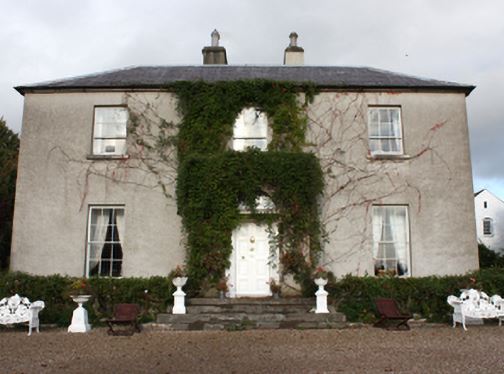
|
| Castletown Cottage (Inishowen) | Joseph Gilligan was leasing this property from the Dogherty estate at the time of Griffith’s Valuation, when it was valued at £14. This property is still extant. |
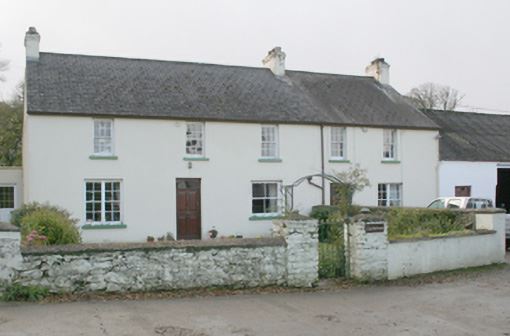
|
| Rose Hill (Inishowen) | Andrew McClen was leasing this property from the Dogherty estate at the time of Griffith’s Valuation, when it was valued over £10. | |
| Fort Stewart (KIlmacrenan) | Sir James Stewart was leasing this property from the estate of Thomas Brooke at the time of Griffiths Valuation in the 1850s, when it was valued at £50. In 1837 Lewis also noted it as the seat of Sir J. Stewart. Buildings are still extant at the site. | |
| Fahan House | Elizabeth Jones was leasing this property from the Norman estate at the time of Griffiths Valuation in the 1850s, when it was valued at over £28. In 1837 Lewis referred to it as the seat of T. Kough. The National Inventory of Architectural Heritage suggests this house was built in the 18th century and extended in the 19th. It appears to be associated with a number of different families. |

|
| St. Johns/Roseville (Inishowen) | William Scott was leasing this property from the Norman estate at the time of Griffiths Valuation in the 1850s, when it was valued at over £11. Lewis referred to it as the seat of Miss Schoales in 1837. It is labelled Roseville on the 1st edition Ordnance Survey map but as St. Johns on the later editions. In the early 2020s it housed a restaurant known as the Red Door. | |
| Glengollen | This property was held in fee by Thomas Norman at the time of Griffiths Valuation in the 1850s, when it was valued at £62. Lewis referred to it as the seat of Charles Norman in 1837. It was owned by his grandson, also Charles Norman and valued at £60 in 1906. Charles Norman was killed in the First World War. Local sources suggest the estate was acquired by the Land Commission after 1923. The house was demolished in 1937. | |
| Gort House (Inishowen) | Andrew S. Hamilton was leasing this property from the Norman estate at the time of Griffiths Valuation in the 1850s, when it was valued at almost £14. A house is extant at this site. | |
| Guystown (Raphoe) | At the time of Griffiths Valuation in the 1850s, Benjamin Humfrey was leasing this property from the Erne estate, when it was valued at £7. It was subsequently enlarged and is labelled Guystown on all editions of the Ordnance Survey map. The National Inventory of Architectural Heritage suggests it was originally built c.1720. It is still extant and occupied. | |
| Dromore (Raphoe North) | At the time of Griffiths Valuation in the 1850s, Jane Stephenson was leasing this property from the Earl of Erne's estate when it was valued at £10. | |
| Cavanacor | This property was held in fee by Benjamin [Humfrey] at the time of Griffiths Valuation, when it was valued at £33. Wilson referred to it as the seat of "Mrs Kays" in 1786. The National Inventory of Architectural Heritage suggests it was built about 177-, possibly incorporating part of a seventeenth century house. It is still extant and occupied. |
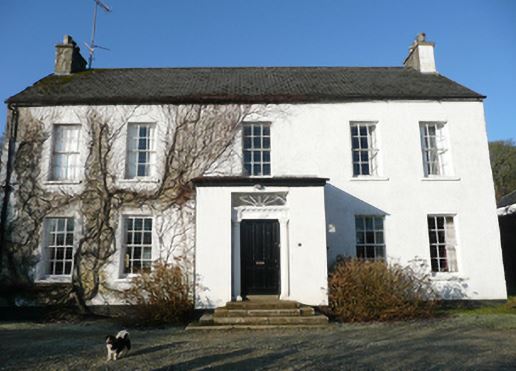
|
| Broomfield (Raphoe North) | John Humphreys was leasing this property from Robert Keys at the time of Griffiths Valuation, when it was valued at £20. It is labelled Broomfield on all editions of the Ordnance Survey maps. A house is still extant at this site. A second house, labelled Cumberland Lodge [C310024], is shown in this townland on the 25-inch Ordnance Survey map of the early 20th century. A house is still extant at this site. | |
| Clonleigh (Raphoe North) | Reverend William Knox held this property in fee at the time of Griffiths Valuation in the 1850s when it was valued at £70. In 1906 it was the property of William Knox and valued at £73. It is no longer extant. | |
| Longvale | At the time of Griffiths Valuation in the 1850s Letitia Keys was leasing this property from the Knox estate when it was valued at £14. On the 1st and 25-inch edition Ordnance Survey maps it is labelled Longvale. The National Inventory of Architectural Heritage suggests that this house, now known as Hall Green Farm, mostly dates from the mid eighteenth century though possibly incorporating fabric from the earlier house on the site, reputedly built by Thomas Keyes in the early seventeenth century. |

|
| Port Hall (Raphoe North) | James Clarke was leasing this property from the Dogherty estate at the time of Griffiths Valuation in the 1850s, when it was valued at £35. The National Inventory of Architectural Heritage suggests it was built in the 1740s for John Vaughan and classifies it as a building of national importance. It is still extant and occupied. |
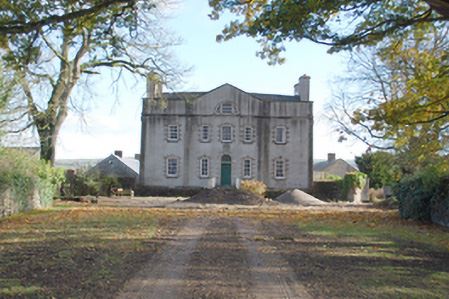
|
| Murlough (Raphoe North) | At the time of Griffiths Valuation in the 1850s, James Houston was leasing this property from the Earl of Erne's estate when it was valued at £10. On the 25-inch edition Ordnance Survey map the house on the site is labelled Manse. The National Inventory of Architectural Heritage suggests it was enlarged in the later nineteenth century, possibly when it came into use as the manse. It is still extant and occupied. |
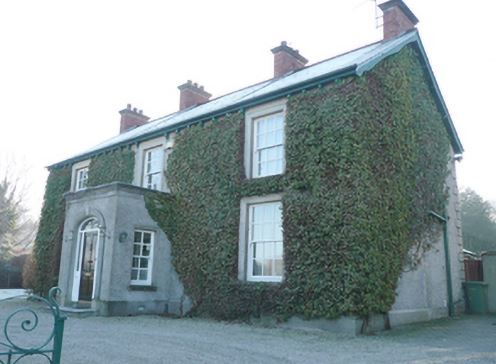
|
| Ballyduff House (Raphoe North) | At the time of Griffiths Valuation, William Clarke was leasing this property from the Knox estate when it was valued at £17. It is still extant and occupied. |
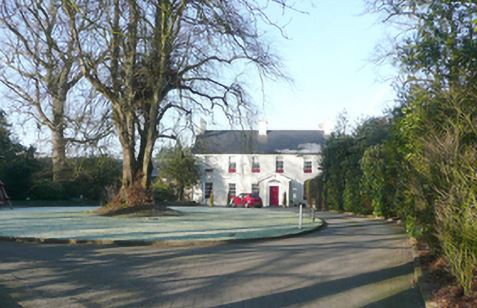
|
| Croghan House (Raphoe North) | At the time of Griffiths Valuation, James Cochran was leasing this property from Joseph Scott when it was valued at £55. It was constructed after the publication of the 1st edition Ordnance Survey map of the 1830s and is labelled Croghan House on later editions. It is still extant and occupied. |
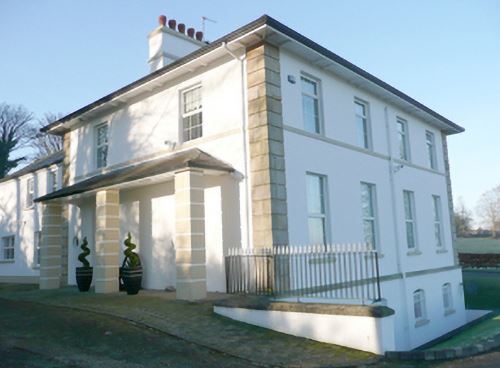
|
| Treantagh (Raphoe North) | Henry S. Hamilton was leasing this property from the Abercorn estate at the time of Griffiths Valuation in the 1850s, when it was valued at £25. |
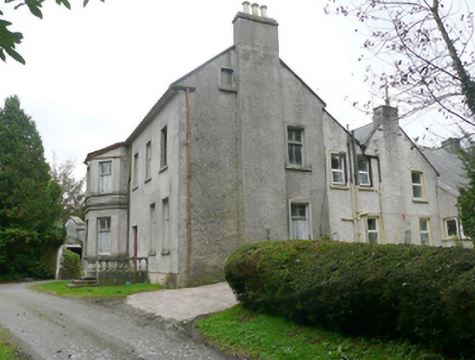
|
| Ardrumman House | Francis Mansfield was leasing this property from Thomas Patterson at the time of Griffiths Valuation in the 1850s, when it was valued at £40. The National Inventory of Architectural Heritage suggests that the house was built c.1840. It is still extant. | |
| Pluck | James B. Marshall was leasing this property from the Hayes estate at the time of Griffiths Valuation in the 1850s, when it was valued at £18. It adjoined a mill complex. The site is occupied by modern buildings now. | |
| Castle Grove (Kilmacrenan) | Castlegrove House, parish of Aghanunshin, barony of Kilmacrenan, was held in fee by James Grove Wood in the 1850s. The National Inventory of Architectural Heritage suggests it was built c.1750 but modified in the nineteenth century. By 1906 it was owned by John W.C. Grove and valued at £40. It is now a luxury country house hotel. |
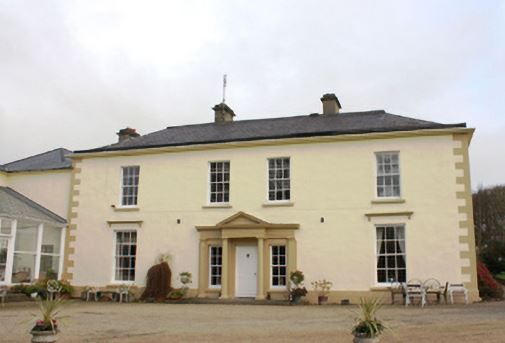
|
| Milltown House | At the time of Griffiths Valuation, Thomas Witheroe was leasing this property from the Marquis of Donegall’s estate when it was valued at £25 and had an adjacent mill. It appears not to be extant now. | |
| Crislaghmore | The buildings at Crislaghmore were leased from the Donegall estate by Samuel and Joseph Cochrane at the time of Griffiths Valuation in the 1850s when the valuations were £19 and £13 respectively. | |
| Altaghaderry | Alexander Maxwell was leasing this property from the estate of Robert McClintock at the time of Griffith’s Valuation, in the 1850s, when it was valued at £10. Modern buildings are visible at the site now. | |
| Castruse House | William Cochrane was leasing this property from Robert Bateson at the time of Griffiths Valuation in the 1860s when it was valued at £12. It is labelled Castruse Huose on the 25-inch map of the early 20th century. In the 1870s John Motherwell's address is given as Castruse. The National Inventory of Architectural Heritage suggests it was built in the last years of the 18th century on the site of an earlier house. It is still extant and occupied. |
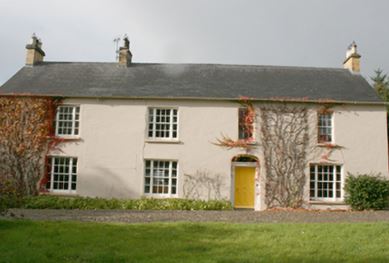
|
| Gortinlieve | James Fulton was leasing this property from Robert Bateson at the time of Griffiths Valuation in the 1860s when it was valued at £14. An adjacent building is labelled Bogay Works on the 25-inch and later Ordnance Survey maps. It was apparently a site for the manufacture of agricultural implements. Farm buildings appear to occupy the site now. | |
| Ballyboe House | This property was held in fee by the Bateson estate at the time of Griffiths Valuation in the 1850s when it was valued at £27. It is labelled Ballyboe House on the 25-inch Ordnance Survey map of the early 20th century. It is still extant. | |
| Bogay House (Raphoe North) | Reverend Edward Bowen held this property in freehold at the time of Griffith's Valuation in the 1850s when it was valued at £35. Local sources suggest it was a hunting lodge built by the Abercorn estate. It is still extant and occupied. |
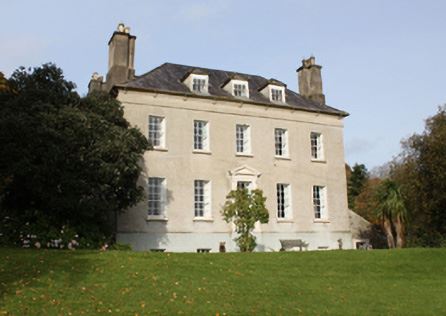
|
| Colehill | Reverend Hugh Norman was leasing this property from the Earl of Wicklow's estate at the time of Griffith's Valuation in the 1850s when it was valued at £12. It is labelled Colehill on the 1st edition map of the 1830s but as Allsaints Rectory on subsequent Ordnance Survey maps. It is still extant. | |
| Crossroads (Raphoe North) | William Lockhart was leasing this property from the Earl of Wicklow's estate at the time of Griffith's Valuation in the 1850s when it was valued at £10. It has the label Crossroads on the 25-inch and later 6-inch edition Ordnance Survey maps. The National Inventory of Architectural Heritage suggests the house at the site was built later in the 19th century but it appears likely that an earlier house existed there. |
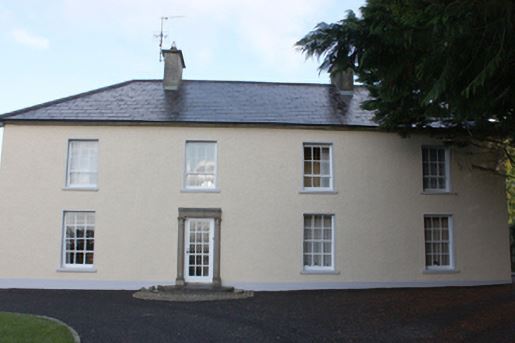
|
| Castleforward | John Ferguson was leasing this property from the Earl of Wicklow's estate at the time of Griffith's Valuation in the 1850s when it was valued at £35. In 1837, Lewis had referred to it as the property of the Earl of Wicklow, then occupied by W. Marshall. Though it survived well into the 20th century, Castleforward is now a ruin. | |
| Ballyhasky House | Reverend William Scott was leasing this property from the Earl of Wicklow's estate at the time of Griffith's Valuation in the 1850s when it was valued at £15. It is still extant and occupied. |
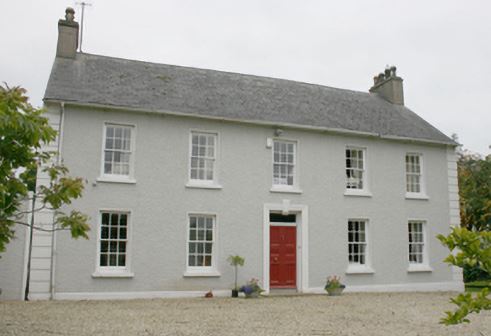
|
| Ballyhasky Middle | Patrick Glacken was leasing this property from the Earl of Wicklow's estate at the time of Griffith's Valuation in the 1850s when it was valued at £10. It is still extant and occupied. |

|
| Monglass | Caldwell Motherwell was leasing this property from the Earl of Wicklow's estate at the time of Griffith's Valuation in the 1850s when it was valued at £13. The house at the site now is of late 19th century construction. | |
| Drumbarnet | Samuel Chambers was leasing this property from the Earl of Wicklow's estate at the time of Griffith's Valuation in the 1850s when it was valued at £18. In 1906 it had the same valuation and was owned by William Glenn. It is still extant. The National Inventory of Architectural Heritages suggests that it was extensively altered around 1911 with an extension added to the front at that time. |
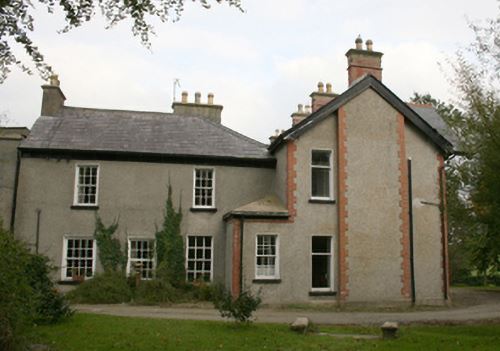
|
| Cloon (Raphoe) | Robert McFarlane was leasing this property from Anne Law at the time of Griffiths Valuation in the 1850s, when it was valued at £16. Labelled as Cloon on all editions of the Ordnance Survey maps. Farm building occupy the site of the original house now. | |
| Moyle Moss | Henry Thompson was leasing this property from John S. Law at the time of Griffiths Valuation in the 1850s, when it was valued at £11. Labelled Moyle Moss on all editions of Ordnance Survey. The National Inventory of Architectural Heritage suggests the house at the site now is not the original but outbuildings date from the mid 19th century. |
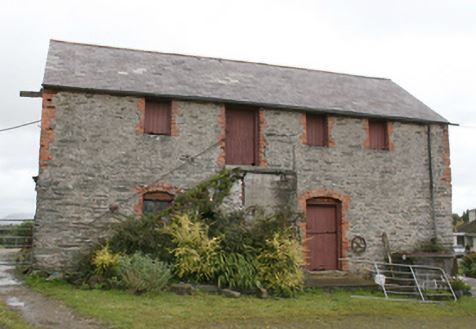
|
| Heath Hill (Raphoe) | Francis Long was leasing this property from John S. Law at the time of Griffiths Valuation in the 1850s, when it was valued at £16. A house labelled Heath Hill is visible at this site on the 25-inch Ordnance Survey map of the early 20th century. Buildings are still extant at the site. | |
| Castle (Newtowncunningham) | Henry McCoy was leasing this property from John S. Law at the time of Griffiths Valuation in the 1850s, when it was valued at £17 10s. The lease also included two flaxmills. This property is labelled Castle on all editions of the Ordnance Survey maps. Campbell records that in the 1790s, the Castle in Newtowncunningham was the home of Lady Hamilton, widow of Sir Henry Hamilton and that the McFarland family were the last occupants. | |
| Mason Lodge (Raphoe) | William McCormack was leasing this property from John S. Law at the time of Griffiths Valuation in the 1850s, when it was valued at £10. McCormack was one of the investors associated with the Lough Swilly land reclamation works in the mid 1840s. This property is now the centre of a large farm. | |
| Sallybrook | James Marshall was leasing this property from the Earl of Wicklow's estate at the time of Griffiths Valuation in the 1850s. It was then valued at £15. In 1906 it was the property of Samuel Marshall and valued at £12. The site appears to be occupied by farm buildings now. | |
| Shellfield (Kilmacrenan) | Nathaniel Stewart was leasing this property from the estate of Eliza Young and Thomas Lecky at the time of Griffiths Valuation, when it was valued at £12. In 1837 Lewis referred to it as the seat of N. Stewart. It is labelled Shellfield on all editions of the Ordnance Survey maps. The National Inventory of Architectural Heritage suggests it was built in the middle of the eighteenth century. It is still extant and well maintained. |

|
| Carrownamaddy (Burt) | At the time of Griffiths Valuation in the 1850s, Joseph Dysart was leasing this property from Lord Templemore (Chichester) estate, when it was valued at £15. A house and substantial farm remain at the site. | |
| Kilmainham - The Cottage/Heath Lodge | Ambrose Leet records Kill, Mount Nugent, as the residence of George Lenauze. Kill House, located on the estate of the Bishop of Kilmore, is named on the first edition 6 inch Ordnance Survey map (publ. 1837). At this time there were laid out gardens and extensive plantations within the demesne grounds. The buildings at Kill House are reduced in size on the later 25 inch map. In the 1850s, Garrett Keogh was the occupier holding the property valued at £5 from John Orpen. This house is no longer extant. |

